By Pat McTaggart
At first, it was all about the ore. Magnesium, iron, and manganese ore were the lifeblood of German industry, especially the armaments industry, which used the iron and manganese to produce steel for Hitler’s war machine. Magnesium was one of the main aerospace construction metals and was used extensively in German aircraft production. It was also used as a lining for the massive furnaces in the iron and steel works.
Nikopol: A Town Rich With Ore
Located in the southern Ukraine, the town of Nikopol was the center of one of the largest manganese ore basins in the western Soviet Union. Some 50 miles northwest of Nikopol, the town of Krivoi Rog sat atop an equally large iron ore basin. The entire area had been developed under the czars, and after the Communist takeover the ore taken from its mines served to build up the Red Army, Air Force, and Navy.
When German forces crossed the Soviet border on June 22, 1941, the forces of Field Marshal Gerd von Rundstedt’s Army Group South smashed through Russian frontier defenses and fanned out across the steppe, taking hundreds of thousands of Red Army soldiers and leaving thousands more dead on the battlefield.
One of the units in von Rundstedt’s army group was General Werner Kempf’s XLVIII Panzerkorps. In August, Kempf’s armored and motorized forces were moving toward the
ore-rich areas at Krivoi Rog and Nikopol. As the Germans advanced, Soviet troops and civilians worked frantically to dismantle entire factories and transport them to locations east of the Ural Mountains. Kempf’s Panzerkorps stood on the west bank of the Dnieper River by the end of the month, having taken both towns as his troops drove further eastward.
Close on the heels of the victorious German troops came teams of engineers tasked with repairing the devastation left behind by the Russians. They were part of the Hermann Göring Werke, an organization formed by Luftwaffe chief Göring and some industrial cronies in the early days of Hitler’s regime. A Reich- owned enterprise, the Hermann Göring Werke operated mines, steel works, and other industries in conquered countries across Europe.
Once the Krivoi Rog and Nikopol operations were running again, Russian iron ore and magnesium fueled the German war machine. A huge factory in Nikopol was adorned with the Hermann Göring Werke logo, and trains filled with ore left the town daily, headed west toward the furnaces of the Reich.
Von Manstein’s Battered Army
The waning months of 1943 saw German fortunes in Russia turn dramatically from those heady days of 1941. After the massive battle at Kursk in July, the Soviets launched a series of attacks in southern Russia that sent the Germans reeling westward. By late August, Red Army forces were nearing Smolensk on Army Group Center’s right flank.
Farther south, Field Marshal Erich von Manstein’s Army Group South was forced to give up Kharkov on August 23. The wily field marshal immediately ordered General Hermann Breith’s III Panzerkorps to counterattack the Soviet forces that were pushing west from Kharkov. In a series of sharp, bloody engagements, the III Panzerkorps hit the 1st Tank and 6th Guards Armies near Bododukhov, stopping them dead in their tracks. The commander of the Voronezh Front, General Nikolai Fedorovich Vatutin, was forced to move his 5th Tank Army into the fray, effectively bringing plans for a quick thrust westward to a halt for several days.
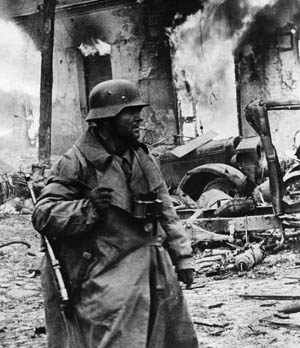
When Vatutin resumed his offensive, the III Panzerkorps kept nipping at the Russian flanks like a terrier. Meanwhile, Hitler flew to meet von Manstein at Vinnitsa, which had once been the Führer’s headquarters in the Ukraine. Von Manstein, blunt as ever, gave Hitler the cold, hard facts. His army group had suffered 133,000 casualties in August alone but had received only 33,000 replacements. The Soviets, while suffering greater casualties, could replace them with men pressed into service from the newly liberated areas and by transferring units from other sectors.
“Summing up the present situation, I insisted that while the Donetz [River] could not be held with the forces now available, the far greater danger for the German southern wing as a whole lay on the northern wing of our Army Group,” von Manstein later wrote in his memoirs. “[The] 8th and 4th Panzer Armies would be unable in the long run to prevent the enemy from breaking through to the Dnieper [River].”
The field marshal then gave Hitler a choice—send at least 12 new divisions to the Army Group immediately and replace worn-out divisions with ones from quieter sectors on the front or abandon the Donetz Line. Hitler agreed with von Manstein and promised more forces. The promise was never kept.
The Unstoppable Soviet Advance
While the Führer and his field marshal talked, the Soviets were once again on the move. During the final days of August, the Forty-Fourth Army of General Fedor Ivanovich Tolbukhin’s South Front took Taganrog, a port on the Sea of Azov. Battered elements of the German XXIX Armeekorps, ordered to hold the city, managed to make their way through the Soviet lines while suffering heavy casualties in the process.
As August drew to a close, Soviet forces on the southern wing of the Eastern Front outnumbered the Germans about two-to-one in manpower and had an even larger ratio advantage in tanks, aircraft, and artillery. While von Manstein continued to plead with Hitler for freedom of movement, his divisions were being bled dry by the Russian juggernaut. Worse was to follow.
During the first week of September, Army Group South was forced to give up the towns of Putivl (severing the Bryansk–Konotop rail line and breaking the communications line between Army Group Center and Army Group South), Artemovsk, Konotop, Kramatorsk, Slovyansk, and Konstantininovka. At the same time General Erwin Jaenicke’s Seventeenth Armee, which held a bridgehead on the Kuban Peninsula, was given permission to begin withdrawing across the Kerch Strait to the Crimea. Later in the war, a Soviet general would refer to the Crimea as “our largest prisoner-of-war camp.” When the Crimea was cut off by the Soviets later in the month, the Seventeenth Armee would be effectively out of the battle for good.
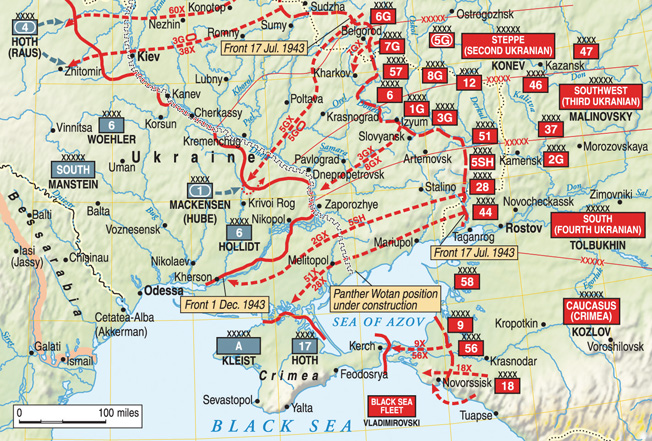
There seemed to be no stopping the Red Army as it continued to surge forward in the second week of September. First, the cities of Stalino and Krasnoarmyansk fell, followed by Mariupol and Barvenkovo. On the Kuban Peninsula, the 250,000 soldiers of the Seventeenth Armee continued their successful evacuation, giving more than half the coastline of the Sea of Azov to the Soviets.
During the second week of September, while city after city was being liberated by Russian troops, von Manstein met with Hitler at Zaporozhye. Von Manstein once again stressed the serious situation that Army Group South was facing. “I emphasized that the position on the Army Group’s right wing could not be restored forward of the Dnieper,” he wrote in his memoirs.
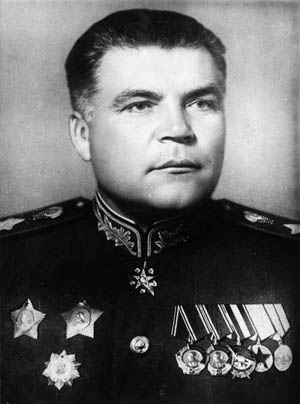
Once again Hitler listened, and once again he refused to face reality. He did, however, order Army Group Center to send von Manstein four divisions that would start moving south on September 17.
Before those divisions arrived, the situation in the south grew even worse. General Rodion Iakovlevich Malinovsky’s Southwest Front’s Sixth Army captured Lozovaya on the 16th and Tolbukhin’s South Front’s Forty-Fourth Army took Berdyansk on the 17th, forcing General Karl Hollidt’s Sixth Armee back to defenses near Melitopol. By September 21, the First Panzerarmee had been pushed back to the Dnepropetrovsk bridgehead and Sinelnikovo had fallen to the Southwest Front.
The final week in September saw the Germans in southern Russia lose even more ground. Although the Soviets paid a heavy price for their success, Poltava and Dnepropetrovsk were taken and Kremenchug was liberated after a bloody fight. Von Manstein was able to establish a tenuous line behind the Dnieper, but his army group had been severely mangled, with many of his divisions reporting a combat strength of less than a reinforced regiment.
Challenging the Zaporozhye Bridgehead
At the beginning of October, von Manstein moved his headquarters from Kirovograd to Hitler’s former headquarters at Vinnitsa as the Red Army continued to push westward. By October 5, General Vasilii Ivanovich Chuikov’s Eighth Guards Army was involved in heavy fighting near Dnepropetrovsk. In the Kuban, the final elements of the Seventeenth Armee evacuated the Taman Peninsula, making the short journey across the Kerch Strait to the Crimea.
On October 10, Malinovsky’s Southwest Front unleashed a three-pronged attack on the Zaporozhye bridgehead, about 20 miles northeast of Nikopol. While Chuikov’s Eighth Guards Army hit the center of the bridgehead, supported on his left flank by General Dmitrii Danilovich Leliushenko’s Third Guards Army, General Aleksei Ilich Danilov’s Twelfth Army attacked from the north. As the Soviets pressed forward, they were met by a steel curtain of fire from the Germans.
Defending the bridgehead were the men of General Ferdinand Schörner’s XL Panzerkorps and the XVII Armeekorps commanded by Maj. Gen. Hans Kreysing. An early Soviet penetration of the bridgehead’s perimeter was eliminated by a German counterattack. Regrouping, the Russians pounded the German positions with a massive barrage.
The Soviet artillery was grouped into division-sized units that augmented regular army divisional artillery batteries. The results of the massed artillery division fire were a clear indication that the Red Army now had the upper hand in guns and ammunition.
By October 11, General Eberhard von Mackensen, commander of the First Panzerarmee, told von Manstein that the bridgehead could no longer be held. Red Army attacks and Soviet artillery were causing unacceptable casualties for the Germans defending it. The next day the German line began to crumble, and by the 13th Soviet forces were involved in heavy fighting around the large hydroelectric dam that spanned the Dnieper.
On October 14, von Manstein contacted the German Army High Command, saying he was ordering the bridgehead to be abandoned. This was a moot point since Soviet advance units had already fought their way into Zaporozhye and street fighting was occurring inside the city. Rearguard German units held the Russians at bay in other sectors until the battered divisions inside the bridgehead could start pulling back to the west.
Heavy fighting was also taking place around Melitopol, where Hollidt’s Sixth Armee was engaged with General Vasilii Filippovich Gerasimenko’s Twenty-Eighth Army. By October 18, the Russians had fought their way to the center of the city and were still pushing forward. Hollidt reported to von Manstein that his depleted units could not possibly hold the city. While Soviet artillery blasted German positions with devastating effect, the Twenty-Eighth Army, supported by General Iakov Grigorevich Kreizer’s Fifty-First Army, took the city on October 28.
The Four Ukrainian Fronts
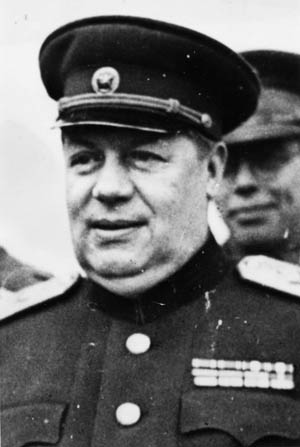
Meanwhile, Stavka (Stalin and the Soviet High Command) went through a redesignation process with its fronts. Vatutin’s Voronezh Front was renamed the 1st Ukrainian Front, while General Ivan Stepanovich Konev’s Steppe Front became the 2nd Ukrainian Front. Malinovsky’s Southwest Front was redesignated the 3rd Ukrainian Front, and Tolbukhin’s South Front became the 4th Ukrainian Front.
The loss of Melitopol put Hollidt’s Sixth Armee in full retreat. Stubborn rearguard actions slowed the Soviets, but they could not hold them back. By the end of October, the Sixth Armee was trying to reestablish a tenuous line about 50 miles east of the Dnieper, but the terrain was totally unsuitable for forming a cohesive defense.
While Tolbukhin’s troops advanced in the south, General Pavel Aleksevich Rotmistrov’s Fifth Guards Tank Army, with General Mikhail Nikolaevich Sharokhin’s Thirty-Seventh Army in support, started a headlong rush to reach Krivoi Rog. Rotmistrov’s armored and mechanized forces sliced through the German line, but a counterattack by Colonel Wend von Wiethersheim’s 11th Panzer Division hit the Soviet advance forces as they moved into the town. Von Wiethersheim’s Panther tanks, supported by Panzer IVs and assault guns, smashed into the Soviet flank, leaving a trail of burning Russian tanks in their wake and causing Rotmistrov to hastily order his forward elements to retreat.
For the moment the threat to Krivoi Rog, and consequently to Nikopol, was contained, but the following day Dnepropetrovsk fell. Once again Rotmistrov ordered his tanks forward as Soviet forces poured across the Dnieper through the newly liberated city. The depth of the Russian penetration was considerable, and while Rotmistrov’s Fifth Guards Tank Army rolled toward Krivoi Rog, Soviet infantry spread out across the steppe.
Coupled with advances farther south, Field Marshal Ewald von Kleist, commander of Army Group A, ordered his Seventeenth Armee to evacuate the Crimea before the peninsula was completely cut off by the 4th Ukrainian Front. The order was immediately countermanded by Hitler, leaving the 17th to rot until Russian forces were able to turn their attention to that forlorn army.
Near Krivoi Rog, heavy rains forced Rotmistrov to slow his advance. While Hollidt’s Sixth Armee formed a bridgehead east of Nikopol, Schörner’s depleted XL Panzerkorps launched a fierce counterattack against Rotmistrov. Meanwhile, General Friedrich Mieth’s IV Armeekorps burst out of the Nikopol bridgehead to hit the right flank of the 4th Ukrainian Front, sending the Soviets reeling back.
The Ruthless General Ferdinand Schörner
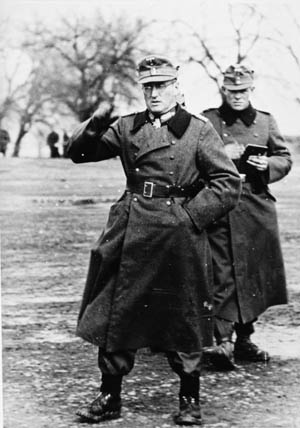
By the end of the month, the Soviet commanders, while not achieving all their goals, could be satisfied with their gains. The Dnieper had been crossed north of Nikopol, and the Germans were barely holding on in their improvised positions west of the river. In the far south, Russian tanks reached Perekop, sealing the land bridge to the Crimea and effectively isolating the Seventeenth Armee. October had been a good month for the Red Army in southern Russia, but there was still more to do.
Hitler was determined to hang on to the mines, depriving the Red Army of their wealth. On October 25, he entrusted the defense of the bridgehead to Schörner.
Born in Munich in 1892, Schörner volunteered for the Bavarian Army when he dropped out of school at the age of 18. He completed his schooling after his service period and rejoined the army as an officer when World War I broke out, being assigned to the Alpine Korps. In the bloody battles on the Western Front, including the Battle of Verdun, Schörner showed his personal courage. When the Alpine Korps was transferred to the Italian Front, Schörner earned the Pour le Mérite (Blue Max) in the campaign during which a young Erwin Rommel earned the same award.
After the war he served in the Freikorps (Free Corps) battling communist militants. In 1920, he joined the Reichswehr (post-World War I German Army) and was posted to a mountain regiment. His unit was involved in smashing Adolf Hitler’s 1923 putsch, but when Hitler was released after a short prison term Schörner became an enthusiastic member of the Nazi Party.
During the first part of World War II, Schörner served in Poland, France, and Belgium as commander of the 98th Gebirgs (Mountain) Regiment. After he was given command of the 6th Gebirgs Division, he was awarded the Ritterkeuz (Knight’s Cross) for action in Greece. He fought in the Arctic sector on the Eastern Front from 1941-1943 before being given command of the XL Panzerkorps.
Schörner had the reputation of being a tough and ruthless commander. An average tactician, he was known for pursuing his mission with the tenacity of a bulldog, but his membership in the Nazi Party and his loyalty to Hitler also gave him an edge that many German commanders did not have. When the occasion demanded, he was able to persuade Hitler to change his mind about total defense or no retreat orders. At times he had disobeyed direct orders from the Führer and suffered no consequences in doing so.
Challenges for the Defenders
When Schörner took command of the bridgehead, the Soviets had already occupied the Dnieper Line from north of Zaporozhye to west of Cherkassy. Red Army forces held a large area in Army Group Center’s sector. The cost had been high on both sides, but the Red Army still held a remarkable advantage in men and equipment.
Von Manstein’s Army Group South had 44 infantry divisions with about 140,000 combat troops, 2,200 artillery pieces of varying calibers, and 270 tanks and assault guns. Von Kleist’s Army Group A consisted of 17 infantry divisions (many of them bottled up in the Crimea) with 54,000 combat troops, 800 artillery pieces, and about 100 assault guns and tanks. The Panzer divisions in the two army groups were in no better shape.
Facing the Germans were the 1st, 2nd, 3rd, and 4th Ukrainian Fronts and the North Caucasus Front. The rifle units in the combined fronts totaled 899,000 combat infantry and were supported by 4,250 tanks and 9,300 artillery pieces.
The Nikopol bridgehead was a tenuous position at best. With a perimeter of about 75 miles, the deepest portion of the German bulge was only about nine miles from the eastern bank of the Dnieper. Inside the bridgehead were two armee korps—Mieth’s IV and General Erich Brandenberger’s XXIX—both subordinated to Schörner’s command. A third korps, the XVII under command of General Hans Kreysing, would later be added to what became known as Gruppe Schörner.
Elements of Malinovsky’s 3rd and Tolbukhin’s 4th Ukrainian Fronts were given the task of eliminating the bridgehead. The Soviets had superiority in the air and on the ground, but they faced what was left of the German defenses known as the Dnieper Line. Although the Germans had good field fortifications within the bridgehead, the land itself favored neither attacker nor defender. Much of the area within and in front of the bridgehead consisted of extensive marshy lowlands known as the Plavna, which was crisscrossed by several waterways. Due to the relative warmth of the winter in southern Russia, the marshes were hardly ever frozen.
Getting into and out of the bridgehead was a problem for the Germans. The Dnieper was between 650 and 1,300 yards wide in the area. To supply the troops on the east bank the Germans had constructed a temporary bridge east of Nikopol. On the southern end of the bridgehead near Bolshaya Lepatikha, two single-lane pontoon bridges had also been constructed by German engineers. These three bridges, which were guarded by flak (antiaircraft) companies, would be the lifeline for Schörner’s troops.
Getting material to the Nikopol sector presented another problem to the already taxed German supply system. The so-called Road IV, the only all-weather road in the entire sector, was of little use as it was already under Soviet artillery fire. There was one railroad line in the area not under Russian control, but that supply source was also in peril. An advance of a mere 30 miles by Malinovsky’s front would take the town of Apostolova and the vital rail spur that branched off to Nikopol.
No Choice but a Frontal Assault
Hitler had now become obsessed with holding the rich ore deposits at Nikopol and Krivoi Rog. He also envisioned the Nikopol bridgehead as a springboard for an attack to relieve the Crimea once the Soviets had been defeated trying to overcome Schörner’s defenses. No one in Berlin dared to shatter that illusion, but commanders at the front such as von Mackensen and von Manstein knew the task set before them was next to impossible. The colored pins on maps at the Führer’s headquarters represented full divisions. At the front, those same pins represented nothing more than brigades or reinforced regiments. Fiction and reality were separated by 1,000 miles.
There was one spot of good news for Gruppe Schörner. In the first week of November, Brig. Gen. Maximillian Freiherr von Edelsheim’s 24th Panzer Division arrived inside the bridgehead after taking part in late October counterattacks around Krivoi Rog. The 24th had been destroyed at Stalingrad and was reconstituted about a week later around a cadre of support units and those who had been wounded and evacuated or flown out of the dying city.
The division was headquartered across the Dnieper from Nikopol in the village of Znamenka. From there, its 60 tanks and three motorized infantry battalions could send combat groups to any part of the perimeter that was in danger. Known as the “Stalingrad” Division, the 24th would be Schörner’s “fire brigade” in the coming months as the Soviets slammed into the German defenses again and again.
The Soviet Front commanders facing the bridgehead did not have many options open to them as they planned to eliminate the Germans. It was obvious that the supply bridges would have to be the main goal of any attack, and the low cloud cover combined with the flak batteries defending the bridges meant that it was improbable that the Red Air Force could effectively destroy them. That left only frontal attacks on the German defenses—a slow and costly business considering how Schörner’s men were dug in.
Neither of the Russian generals would flinch at the idea. Tolbukhin was born in 1894, the son of a peasant. Participating in the massive battles of World War I, he joined the Red Army in 1918 and served in a number of positions during the Russian Civil War. Tolbukhin graduated from the prestigious Frunze Academy in 1935 and went on to perform staff duties during the first part of World War II. He commanded the Fifty-Seventh Army during the Battle of Stalingrad and was promoted to a front commander in March 1943.
Malinovsky was cut from the same cloth as Tolbukhin. The illegitimate son of a railroad worker and a hospital cook, he was born in Odessa in 1895. He was a veteran of World War I, served in the Red Army during the Civil War, and graduated from the Frunze Academy in 1930. After fighting in the Spanish Civil War he went on to command a corps and two armies before becoming a front commander.
A Short Lull
The first days of November brought a lull to the Nikopol area, as late fall rains made the maneuver of large units next to impossible. Both sides continued to send out patrols to ascertain their opponent’s strengths and weaknesses, and sometimes those patrols ran into each other, causing short, sharp firefights.
On November 6, the commander of the Forty-Fourth Army, Lt. Gen. Vasilii Afanasevich Khomenko, and his senior artillery commander were on one such reconnaissance mission. Khomenko wanted to get a closer look at the defenses of Brig. Gen. Erich Gruener’s 111th Infanterie Division. His reconnaissance vehicle inadvertently crossed into German territory and came under fire, which left Khomenko severely wounded. The Soviet general died the same day. Inside his vehicle, men of Gruener’s Grenadier Regiment 50 found a trove of maps and documents detailing plans of attack and Soviet troop displacements that allowed the Germans to make defensive adjustments for the coming Russian attack.
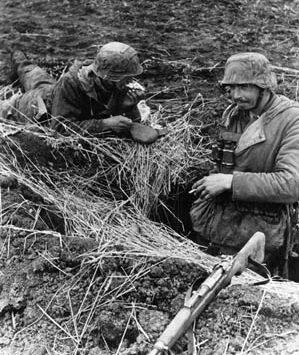
As the Germans waited for the Soviets to strike, work continued on three defensive lines inside the bridgehead. The primary line was called the Adele I Line. Secondary positions to the rear were dubbed the Sigrid Line, and a third line near the Dnieper, nicknamed Ursula, would be used in case of a major Soviet breakthrough or as a final barrier in case the order was given to abandon the bridgehead.
The lull did not last for long. Along Mieth’s IV Armee Korps’ front, the Soviets tried a frontal attack with a combined armor-infantry force. The attack hit Brig. Gen. Friedrich-August Weinknecht’s 79th Infanterie Division and its neighboring divisions on November 5. Antitank fire destroyed some of the Russian tanks, but there were always others to take their place to continue the attack.
To Weinknecht’s left, Brig. Gen. Eugen Bleyer’s 258th Infanterie Division had a portion of its forward position overrun. On the 79th’s right, Brig. Gen. Paul Schrecker’s 17th Infanterie Division also experienced heavy frontal attacks. The Soviets hoped to bludgeon their way through the German lines by throwing waves of tanks and infantry against the enemy defenses. It proved to be a costly tactic.
The attack lasted for two days. Red Army artillery pounded the German lines, lifting only when the ground troops were perilously close to the impact points. Such bombardment caused Soviet casualties from friendly fire, but it also forced the Germans to remain under cover instead of firing at the oncoming Russians.
The Soviets managed to break through in some areas, but elements of the 24th Panzer Division were used with great effectiveness in destroying the enemy penetrations. One of the keys to the German success was the lack of Russian armored infantry units, which could have been used to advance with the tanks when the German defenses had been breached.
At Nikopol, once the Soviet tanks were through the German forward line, they fell prey to tank or antitank fire in defenses further to the rear. The advancing Red Army infantry could not keep up with their tanks, leaving both armor and infantry unable to support each other. Therefore, each formation could be engaged by the combined arms of German battle groups, forcing the surviving Soviets to retreat and allowing the lines of the bridgehead to be restored.
Elflein’s Counterattack
On November 8, the 111th Infanterie Division fought off two attacks. Switching tactics, the Russians launched a night attack in battalion strength that was able to penetrate the German line. The following day, the understrength batteries of German Assault Gun Battalion 209 counterattacked. Supported by some scattered infantry units, the assault guns decimated the Russians and sealed the breach before Soviet reinforcements could arrive.
After licking their wounds, the Russians began another assault on the IV Armee Korps. On November 19, Soviet artillery hit the German line with a particularly heavy barrage. Holding a front of about 10 miles, Weinknecht’s 79th Division struggled to hang on as waves of Red Army infantry advanced. The 79th had few reserve forces, and the German general knew that any help he received would have to come from neighboring divisions if a dangerous breakthrough occurred.
By November 20, the Russians had pierced the line of the division’s Grenadier Regiment 212. Pushing forward, the Soviets managed to take the villages of Veselyi and Nezamoshnik behind the main line. An ad hoc battle group, led by Captain Walter Elflein, hit the Russian flank with a vicious counterattack. Hand-to- hand fighting occurred as the surprised Soviets tried to regroup to meet the threat. Elflein’s men advanced without letup, using bayonets and hand grenades to keep the Russians at bay until a unit of the 24th Panzer arrived on the scene.
The panzers faced strong antitank fire from guns dragged forward by the Russian infantry. Soviet reinforcements were also being funneled into the area, making the elimination of the breakthrough force even harder for the Germans.
The villages were retaken on November 23, and the front line was once again restored. Severely wounded, Elflein was flown to a hospital in Krakow. Having already won the Ritterkreuz on October 10, 1943, Captain Elflein received the oak leaves to the award from Hitler’s hand at the Führer’s Berghof “Tea House” on May 31, 1944. His award was dated December 5, 1943—about two weeks after his almost suicidal counterattack.
Restoring the Line
After their failure, the Soviets switched to another sector of the 79th’s front. Lt. Col. Fritz Müller’s Grenadier Regiment 208 became the target of a strong frontal assault after the usual pounding from Red Army artillery. Aided by elements of the 24th Panzer and Assault Gun Detachment 277, Müller’s men held firm. As the Russian attack increased in ferocity, a battalion of Grenadier Regiment 570 from the neighboring 111th Division was also thrown into the line, blunting the Soviet assault.
On the morning of November 25, the Russians attacked again and were driven back. During the afternoon, however, Soviet forces managed to make a mile-and-a-half deep penetration at the junction of the front linking Müller’s regiment with Grenadier Regiment 212. Fighting raged through the night and into the next day. Help from the 24th Panzer and German artillery finally made the difference, and by 0900 on the 26th the original front line was restored yet again.
Another Russian attack hit outpost positions of the 3rd Gebirgs Division. In the early morning, a large group of tanks supported by infantry hit the flank of 1st Lieutenant Horst Heinrich’s 2nd Kompanie/Gebirgs Engineer Battalion 83. In the bitter fighting the Russians broke the line and drove to a depth of 1,000 feet, threatening to cut off the entire company.
Heinrich gathered members of his signal unit and led a counterattack that destroyed three enemy antitank guns. They then used flamethrowers to attack the Russian tanks, allowing the survivors of the company to retreat to the main line of defense some half mile away. Picking up stragglers along the way, Heinrich led 17 men back to the relative safety of the bridgehead defenses. By the time the Russians regained their momentum, the main line had been fully alerted and the attack was stopped by a hail of German fire.
Blunting Another Russian Advance
By now it was clear to the engineers at the mines around Nikopol and Krivoi Rog that it would be only a matter of time before the Soviets captured the area. It was a simple equation. Russian losses were replaced and German losses were not. Production had dropped to almost nothing as the precious refining and mining equipment was dismantled and shipped to other Hermann Göring Werke operations farther west.
With the ore output a nonissue, the correct military move would have been to abandon the bridgehead and fall back behind the Dnieper. Shortening the line would free up forces and form a much needed reserve of divisions that could be used to counter any Soviet attack. Von Manstein had been pushing for such a withdrawal for the past two weeks.
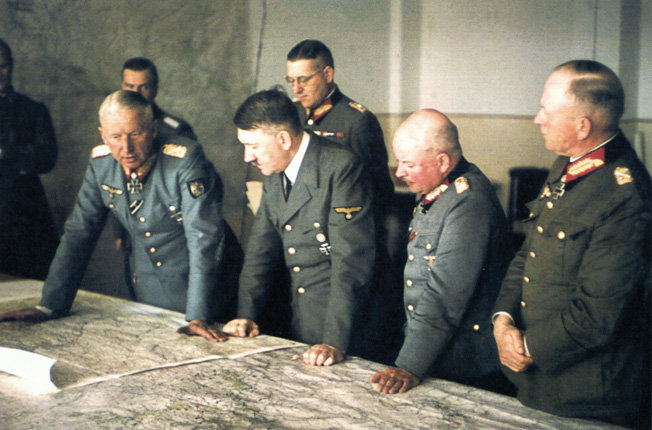
Adolf Hitler had other ideas. He became more obsessed with the idea of using the bridgehead as a springboard for an attack to free the divisions bottled up in the Crimea. Little thought was given to where divisions for such an attack would come from. Hitler had convinced himself that once the Russians attacking the bridgehead were shattered by the German defenses, von Manstein could slice through them, link up with the 17th Armee, and then regain the territory that had been lost during the previous two months.
On December 2, the Soviets hit the 79th Division again. Achieving a breach in the German line, Russian forces drove deep into the inner bridgehead. As they pushed forward toward the Dnieper they were met by several German “alarm units” that had been hastily sent to stop them.
Arriving piecemeal, the German units were ground up by the Russians. On December 3, the Alarm Company of Panzerjäger Regiment 656, commanded by Lieutenant Marec, was swept aside with most of its 194 men lost. Members of the staff of Engineer Battalion 179 and Panzerjäger Detachment 179 suffered the same fate as they fought from hastily prepared defenses.
Those sacrificed in slowing the Russians made it possible for a combat group from the 79th and another from the 3rd Gebirgs to move in and hit the Russian flanks. The Soviets were caught off guard by the German attack and were sent reeling back. What could have been a major setback for the bridgehead defenders was averted as the surviving Russian assault troops scurried eastward toward their own lines.
A Three-Mile-Deep Pocket
Casualties during the Soviet assaults had been high, and for the next two weeks the Russians conducted small probing attacks while their forces were replenished. One thing the Soviets still had enough of was artillery ammunition, and German positions both on the front and inside the bridgehead took a tremendous pummeling daily while the armor and infantry regrouped and were resupplied.
By December 19, the Soviets were ready to try it again. Mieth’s IV Armee Korps received a drum fire artillery barrage as the Russians moved forward. Trenches collapsed, and men were buried alive or were blown to pieces as they tried to make it to secondary defenses. Those who survived stared out of their shattered positions to see a vast wave of Russian tanks and infantry moving toward them.
The Soviets hit Mieth’s Korps with seven or eight infantry divisions, three tank brigades, the IV Guards Mechanized Corps, and the XIX Independent Tank Corps. Incredibly, the Germans held out in most places, but the Russians managed to break through a section of Bleyer’s 258th Division and then widen the breach, allowing tanks and infantry to gradually create a three-mile-deep pocket.
Alarm units from the 258th were augmented by elements of the 111th Division’s Grenadier Regiment 50 as they battled to keep the Soviets from advancing. Antitank guns were shifted and brought into play while a “fire brigade” from the 24th Panzer moved toward the broken sector. As the opposing forces fought at near point-blank range, Soviet ground attack aircraft swooped down to strafe German positions.
To help counter the Soviet air superiority, Schörner ordered antiaircraft units to move closer to the combat area. He also scraped together additional ad hoc units to stop the Russian drive. Soldiers in the midst of the battle were amazed to see the general’s Kübelwagen cross just behind the front line with Schörner encouraging the men to hold firm.
With the help of 24th Panzer, the Germans prevented the Russians from reaching the Dnieper. Artillery from the 111th and 258th blasted the Soviet infantry while the panzers, antitank guns, and infantry tank killer units turned the Soviet tanks into blazing infernos. For the next few days the Russians slowly gave ground. When the front line was finally restored, 81 Soviet tanks lay destroyed on the battlefield.
Hitler’s Stubbornness
Between Christmas and New Year’s Day the Red Air Force launched numerous bombing raids against the bridgehead front line to keep the Germans guessing about where the next major breakthrough would take place. On December 31, about 50 Russian tanks hit the 111th Division. A small breakthrough was sealed off, and the attackers retreated after inflicting only minor damage.
Meanwhile, events to the north were threatening to break the entire southern sector of the Eastern Front wide open. By the end of December, the 1st Ukrainian Front’s 1st Tank Army was pushing along the road to Vinnitsa. Around Korsun, a sizable part of the First Panzerarmee was in danger of being encircled by the 1st and 2nd Ukrainian Fronts, while another encirclement threatened German forces around Kirovograd.
Von Manstein played a brilliant game of chess, sending his meager reserves racing here and there along the front to stop a catastrophic breakthrough. He had grown weary of begging Hitler for permission to withdraw to save threatened troops, and in a few cases he authorized withdrawals himself, presenting Hitler the facts after the action had already occurred.
At Nikopol, however, there would be no such covert withdrawal. With Schörner in command of the bridgehead, von Manstein knew it would be futile to even suggest circumventing the Führer’s orders. Although Schörner was completely loyal to Hitler, even he would have been astounded at the fairy-tale world that was Hitler’s headquarters. As his divisions lay battered and bleeding inside the bridgehead, a December 28 Führer conference found Army Chief of Staff General Kurt Zeitzler telling Hitler that most of the divisions inside the bridgehead, with the exception of the 258th, 294th and the 302nd, were rock solid.
Buoyed by reports such as that, Hitler became more fixated on keeping the bridgehead as a future attack position for a linkup with the Crimea. He continued to ignore von Manstein’s pleas to give up positions on the Dnieper bend, which would have shortened the line, or to evacuate the Crimea, which would have freed an entire army to use in the main line. Instead, he preferred the status quo, arguing that the loss of the Crimea would have an adverse effect on the political front in Bulgaria, Romania, and Turkey.
Rasputitsa: The Russian Muddy Season
By the beginning of 1944, Stalin had become increasingly frustrated with the lack of success at Krivoi Rog and Nikopol. He demanded results from Malinovsky and Tolbukhin, and he wanted them soon. At Nikopol, Tolbukhin opted to cease his frontal attacks and to concentrate on the bridgehead’s flanks. During the first few days of January, Maj. Gen. Kurt Rüdiger’s 302nd Division, occupying the area around Novo Dneprovka, was the focus of several attacks from General Leliushenko’s Third Guards Army. It seemed that Leliushenko’s men were on the verge of turning Mieth’s flank, but then Mother Nature intervened.
Constant changes in temperature, coupled with alternating rain and snow showers, brought an early onset of the rasputitsa, the Russian muddy season, throughout the western Ukraine. The effects of the thaw were immediate, and movement on both sides quickly ground to a halt.
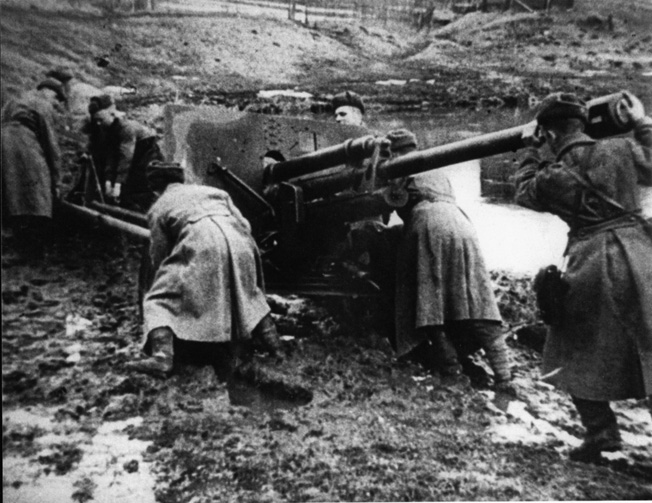
On the Soviet side, Colonel N.A. Grylev wrote, “Rain and melting snow aggravated the difficulties. Rivers overflowed their banks. Roads and tracks became impracticable for vehicles, as was the terrain for infantry. These various factors had a considerable effect on our military activities, limiting the possibility of maneuver and hampering supplies of food, fuel and munitions.”
Major General Nikolaus von Vormann, writing from the Krivoi Rog sector, echoed Grylev’s words. “The rasputitsa,” he wrote, “had set in astonishingly early; everywhere it is spring mud …Worked on by the sun, the rain and the warm winds, the heavy black Ukraine earth turns into thick sticky mud during the day. There is not one metalled road in the country. On foot you sink down to your shins and after a few steps lose shoes and socks there. Wheeled vehicles stall and get stuck. Suction by the mud tore away the too-narrow tracks of our all-purpose vehicles. The only machines capable of making any headway were the tractors and the tanks, which rolled their way forward at a maximum speed of three miles an hour, but at a cost of tremendous strain on the engine and huge petrol consumption.”
Stalin refused to accept excuses from Tolbukhin and Malinovsky. He wanted the Dnieper bend at any cost. The liberation of the Ukraine was just as politically important to him as the retention of the area was to Hitler. Turkey would certainly distance itself from Germany once the Ukraine was in Soviet hands, and Hitler’s allies in southeastern Europe would be threatened by powerful Red Army forces at their borders. Therefore, he kept pressure on the two front commanders to continue their attacks despite the horrific difficulties on the ground.
A Last Wound for Captain Georg Michael
January 10, 1944, saw Sharokhin’s Thirty-Seventh Army and General Vasilii Vasilevich Glagolev’s Forty-Sixth Army (3rd Ukrainian Front) smash into the LVII Panzerkorps in a bid to sever the rail line at Apostolovo. The following day, Tolbukhin launched Leliushenko’s 3rd Guards Army and General Viacheslav Dmitrievich Tsvetaev’s Fifth Shock Army against the IV and XVII Armeekorps with the objective of linking up with Malinovsky’s forces.
Mieth’s and Leliushenko’s divisions were locked in bloody combat as the Soviets struggled to penetrate the German positions. Both sides knew a Russian success would threaten to encircle the left flank of the Sixth Armee, which would make the bridgehead untenable.
Artillery fire killed friend and foe alike as observers called in strikes almost on top of their own positions. As the Russians bent the German lines, Mieth’s men fell back to their secondary positions. Mobile units of the 24th Panzer, stationed closer to the front because of the weather, proved their worth once again as they made their appearance at critical points during the battle. Suffering appalling casualties, the Soviets finally called off their attack on January 16 to receive replacements and regroup for the next assault.
The Russians continued to probe the German line while the bulk of their forces refitted. In one such probing action, the popular commander of the II/Panzergrenadier Regiment 26/24th Panzer Division was severely wounded. Captain Georg Michael, known for his audacity and his fearlessness, was at the front with his battalion when he received his eighth wound.
Michael had been awarded the Ritterkreuz while serving as a cavalryman in the 1940 French campaign. Leading a small reconnaissance unit, he captured more than 500 French and colonial troops through sheer bluff, convincing them that they were surrounded by superior forces. Seriously wounded near Stalingrad, he was flown out of the cauldron while his division was being annihilated. For his actions during the Stalingrad campaign, he became the 187th soldier of the Wehrmacht to receive the oak leaves decoration to his Ritterkreuz.
At Nikopol, Michael’s luck finally ran out. Although he was flown to a hospital in Odessa, he died of his wounds on January 19. Within days of his death, the 24th Panzer received orders to leave the Nikopol bridgehead and move northeast to counter a Soviet armored thrust aimed at Uman. With the departure of the division, the bridgehead defenders knew that their days on the eastern bank of the Dnieper were numbered.
The Withdrawal of Gruppe Schörner
As the Soviets prepared for yet another assault, Schörner was making his own plans for the bridgehead. The Russian advances in the north, coupled with the loss of the 24th Panzer Division, had made holding the Nikopol position impractical. Even if Berlin could not see it, Schörner knew that the time was fast approaching when the bridgehead defenders would have to retreat to the western bank of the Dnieper or be annihilated.
When put in motion, the plan called for withdrawal to the Sigrid Line, with German divisions on the main front leapfrogging through those divisions already occupying the position. The Sigrid Line defenders would then perform the same maneuver through the Ursula Line and cross to the relative safety of the western bank, followed by the Ursula defenders. Artillery, already sighted, would cover the retreating Germans every step of the way.
The forces comprising the Sixth Armee, which included the Nikopol defenders, had suffered casualties during the past few months that had turned most divisions into nothing more than understrength regiments. In late January, Hollidt had 20 divisions under his command. They averaged a frontline strength of 2,500 men. After the transfer of the 24th Panzer to the Eighth Armee, his only reserve was the 9th Panzer Division, which had 13 serviceable tanks and was also severely understrength in artillery and infantry.
Between them, Malinovsky and Tolbukhin had a total of 51 rifle divisions, at least half of them at full strength. They also had two mechanized and two tank corps as well as six tank brigades and a massive amount of independent artillery units.
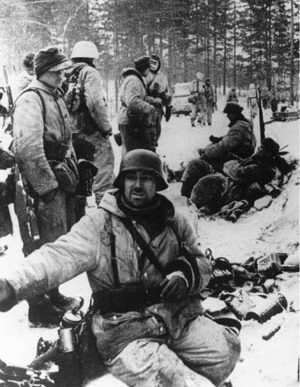
On January 30, the two Soviet fronts struck. At Krivoi Rog, Malinovsky used his Forty-Sixth and Eighth Guards Armies as a battering ram to pave the way for a breakthrough. For the moment, the front held, but this time the German commanders knew they could not halt a Soviet advance for long.
After a heavy bombardment, Malinovsky threw his Fifth Shock, Third Guards, and Twenty-Eighth Armies against the Nikopol bridgehead. Schörner, ever watchful, kept in close communication with his frontline commanders. Reports indicated that a strong Soviet assault force had breached the lines of the 97th Jäger and 9th Infanterie Divisions, driving an eight-mile wedge pointing toward Bolshaya Lepatikha. For the next two days the Russians tried to make a final push to grab the precious pontoon bridges located near the town.
By February 2, Schörner had had enough. At command posts throughout the bridgehead, radio operators received the message “Ladies, excuse Me”—the code to begin evacuation. Upon receipt of the signal the 3rd Gebirgs Division, which was wedged between the 17th and 302nd Divisions, began to fall back while the neighboring divisions extended their flanks to cover the narrow front left by its departure. Because it held such a narrow front the division was able to cross the Dnieper in good order and cover Schörner’s flank west of Grushevka, which was experiencing heavy attacks from Chuikov’s Eighth Guards Army. The Seventeenth soon followed, taking up positions near Maryinskoye.
With Schörner’s withdrawal already under way, Sixth Armee headquarters gave approval for the evacuation on February 4. Hollidt had made the case to Berlin, noting the potential for encirclement of Gruppe Schörner if the Russians broke through the Apostolovo sector—something that seemed imminent. Finally, even Hitler saw the impossibility of holding the bridgehead, although he did mention that he would like to see a small bridgehead maintained around Bolshaya Lepatikha, which proved impossible.
The Beginning of a Longer Retreat
By the time Sixth Armee approved the evacuation, the other divisions of Mieth’s Armee-korps had completed falling back to the Sigrid Line while Brandenburger’s three divisions did the same in the southern sector of the bridgehead. The Soviets pursued, taking heavy casualties in the process from the presighted German artillery. As more troops crossed to the west bank of the Dnieper, the remaining German forces inside the bridgehead retreated to the Ursula Line.
As his divisions crossed the river, Schörner was in the thick of things, shouting orders and making certain that all who could, made it across. At one point he was seen taking charge of an antiaircraft gun, directing fire on the pursuing Russians. The evacuation was successful, but it was only the beginning of a longer retreat.
Pressure in the north from General Ivan Timofeevich Schlemin’s Sixth Army made further defense of the Nikopol arc impossible. As the battered German divisions retreated, part of an overall withdrawal from the Dnieper bend, Soviet troops finally entered Nikopol on February 7.
Marching westward, Red Army battalions passed the hulking wreckage of the Hermann Göring Werke. The massive complex that symbolized the military and industrial might of the Third Reich in the southern Ukraine was now just a smoldering shell. In little more than two years, Hitler’s capital of Berlin would look the same.
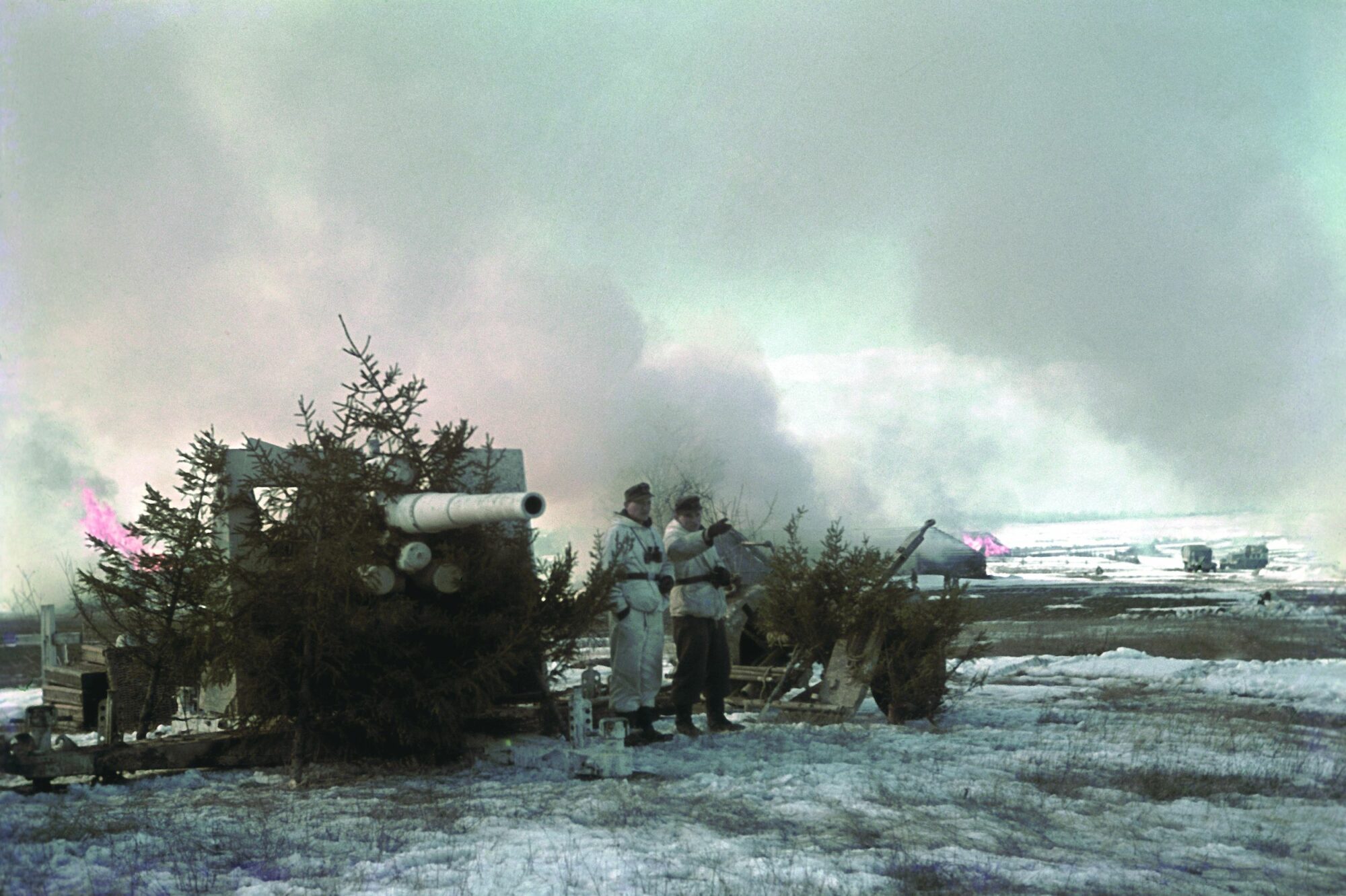
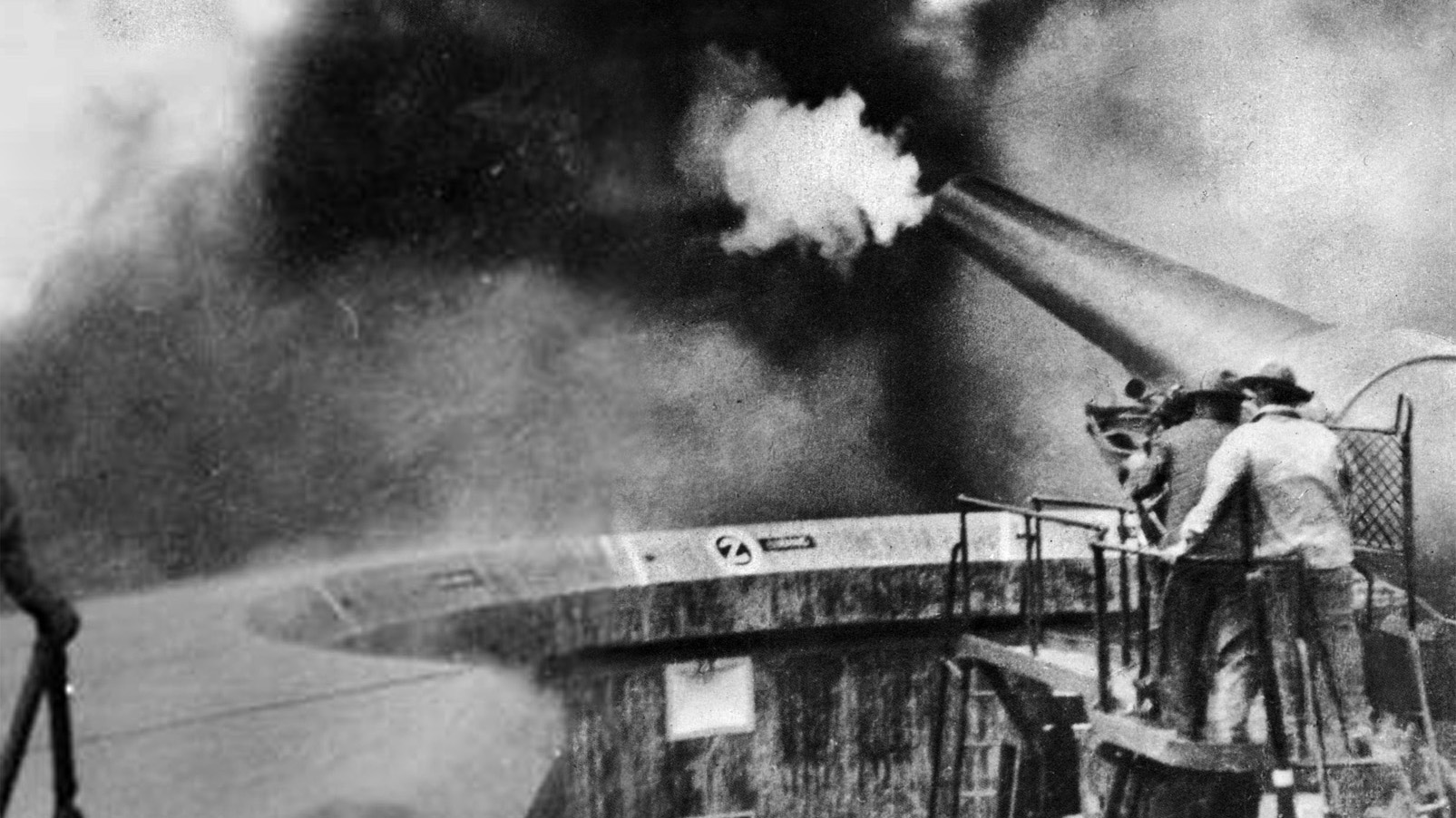
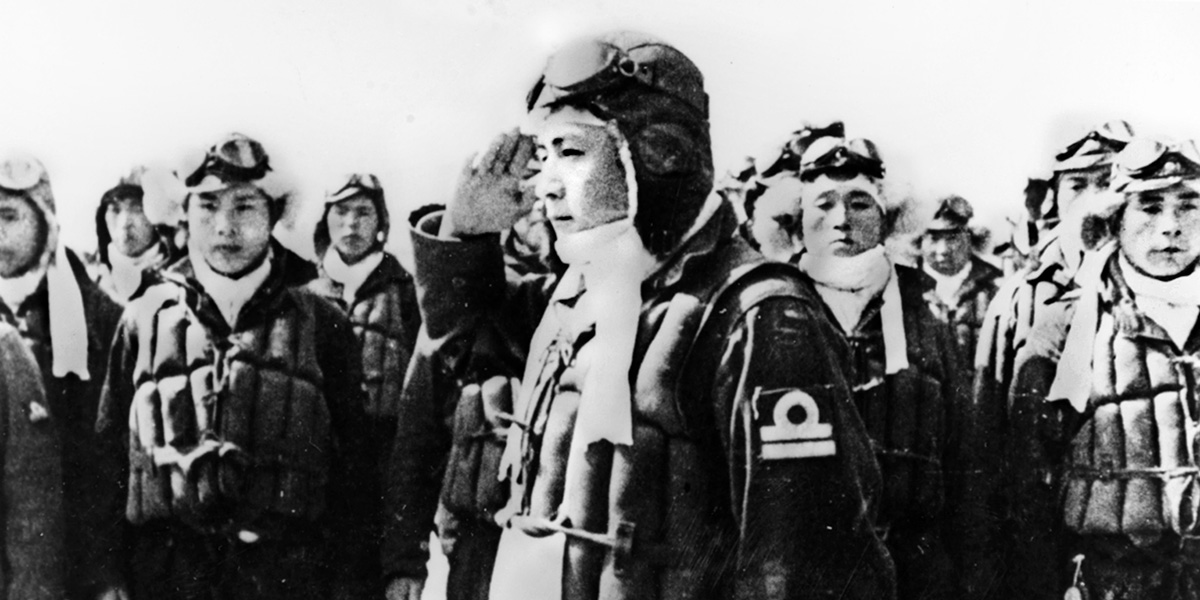
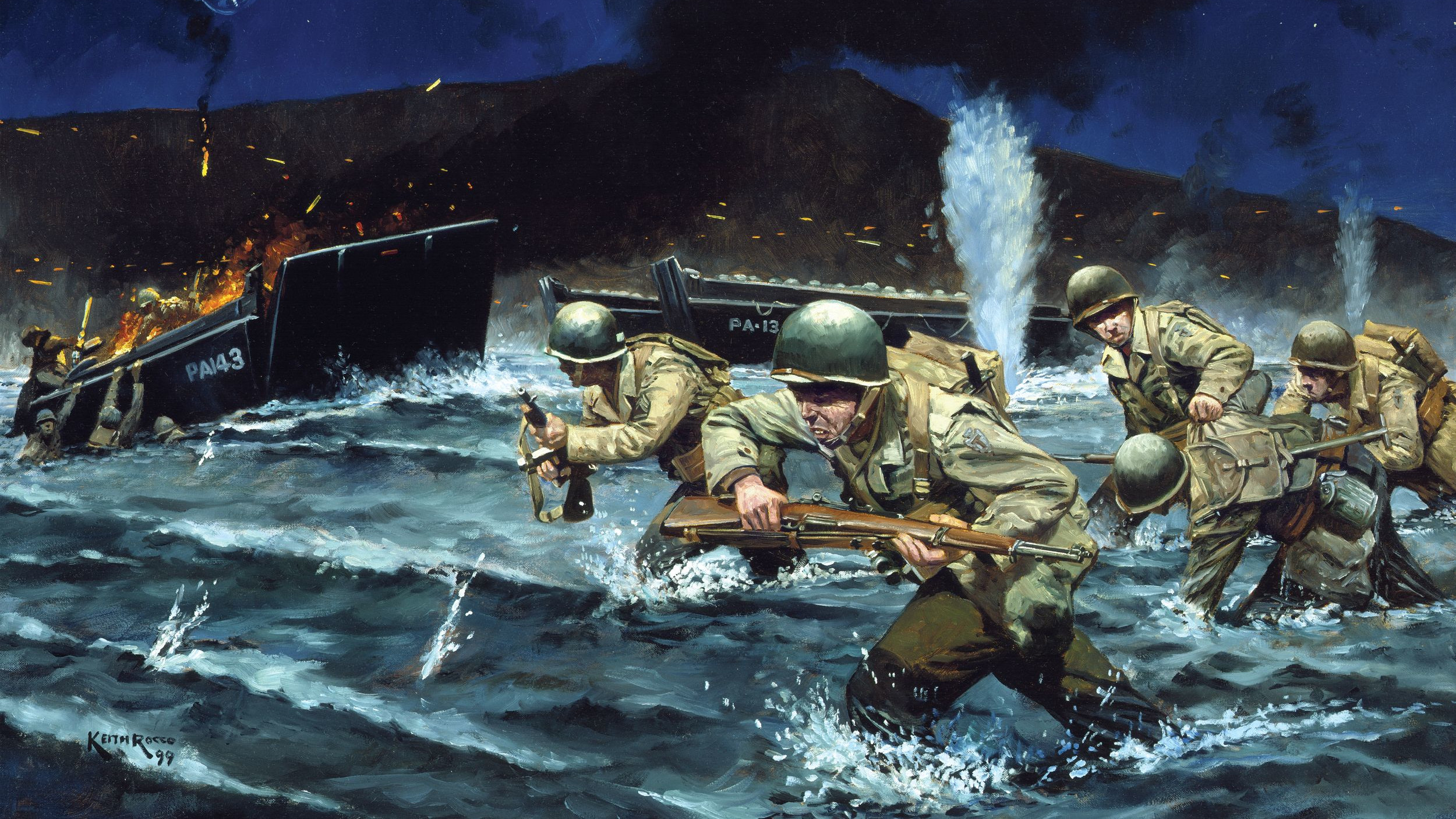
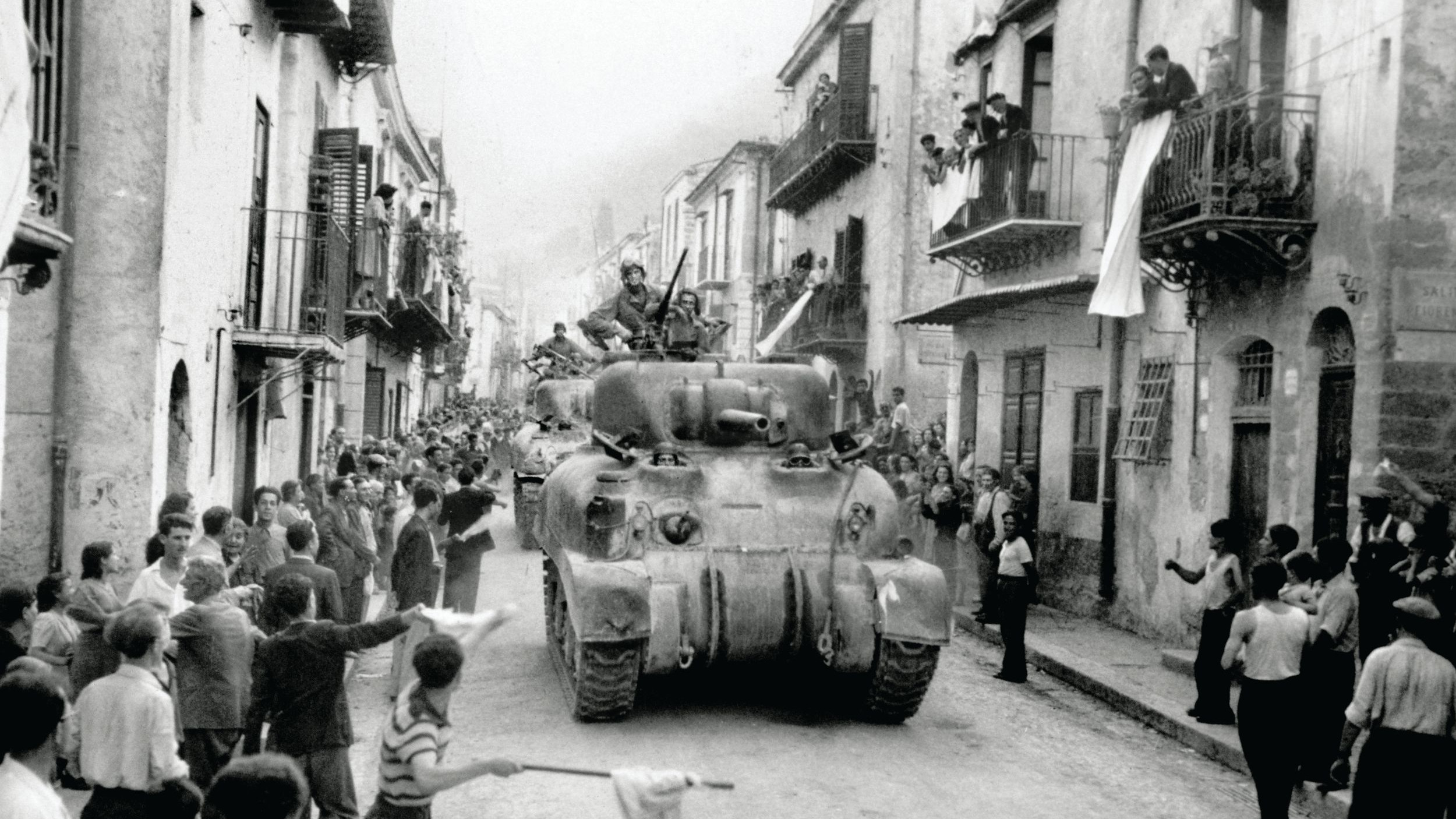
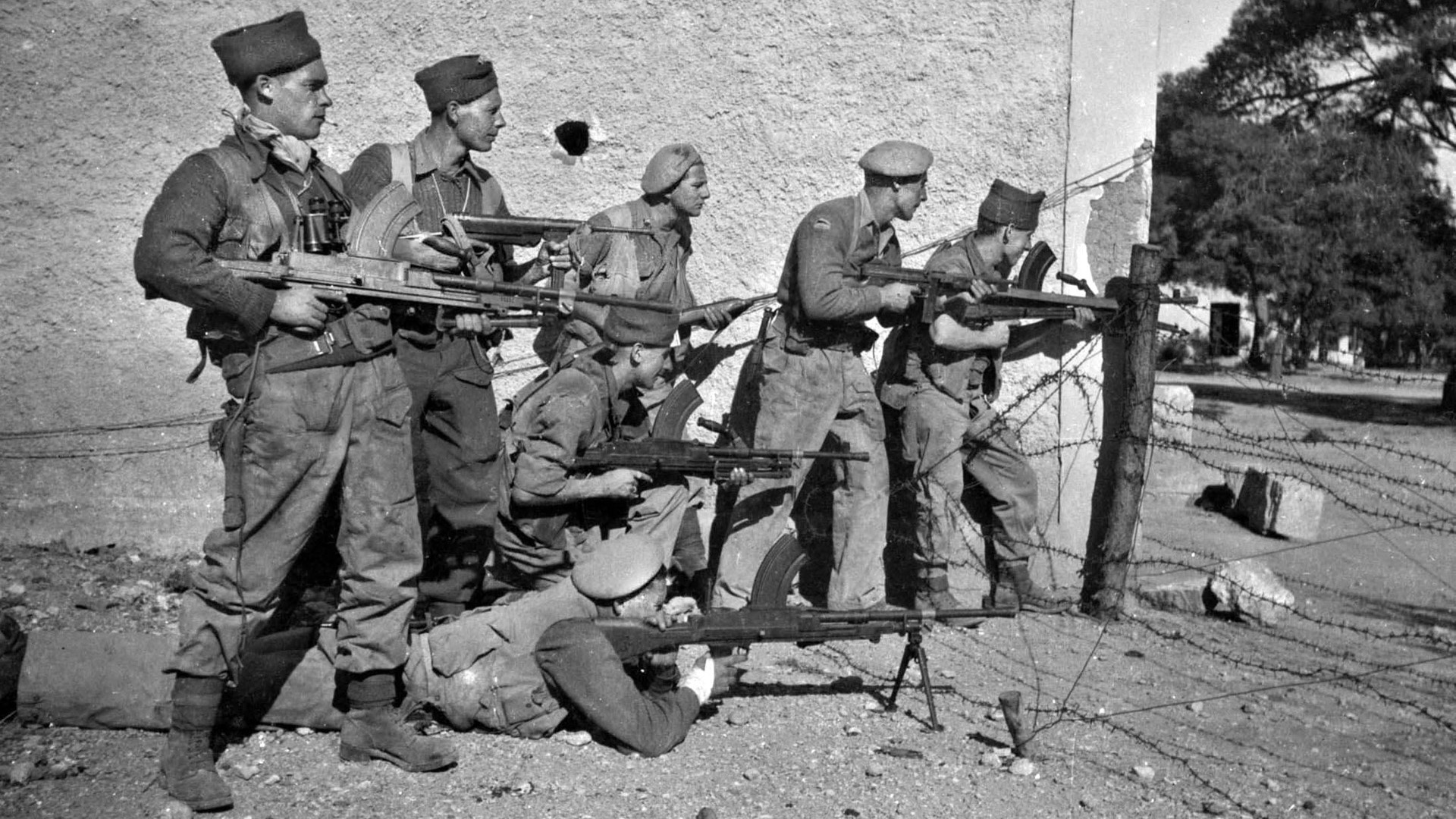
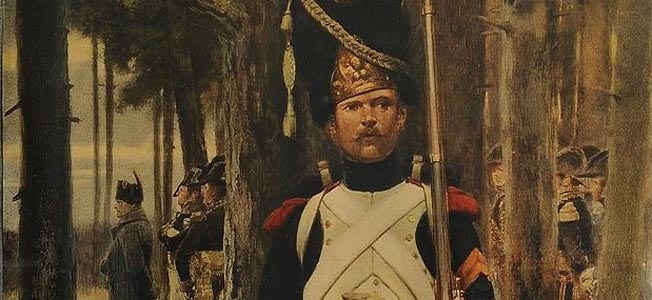
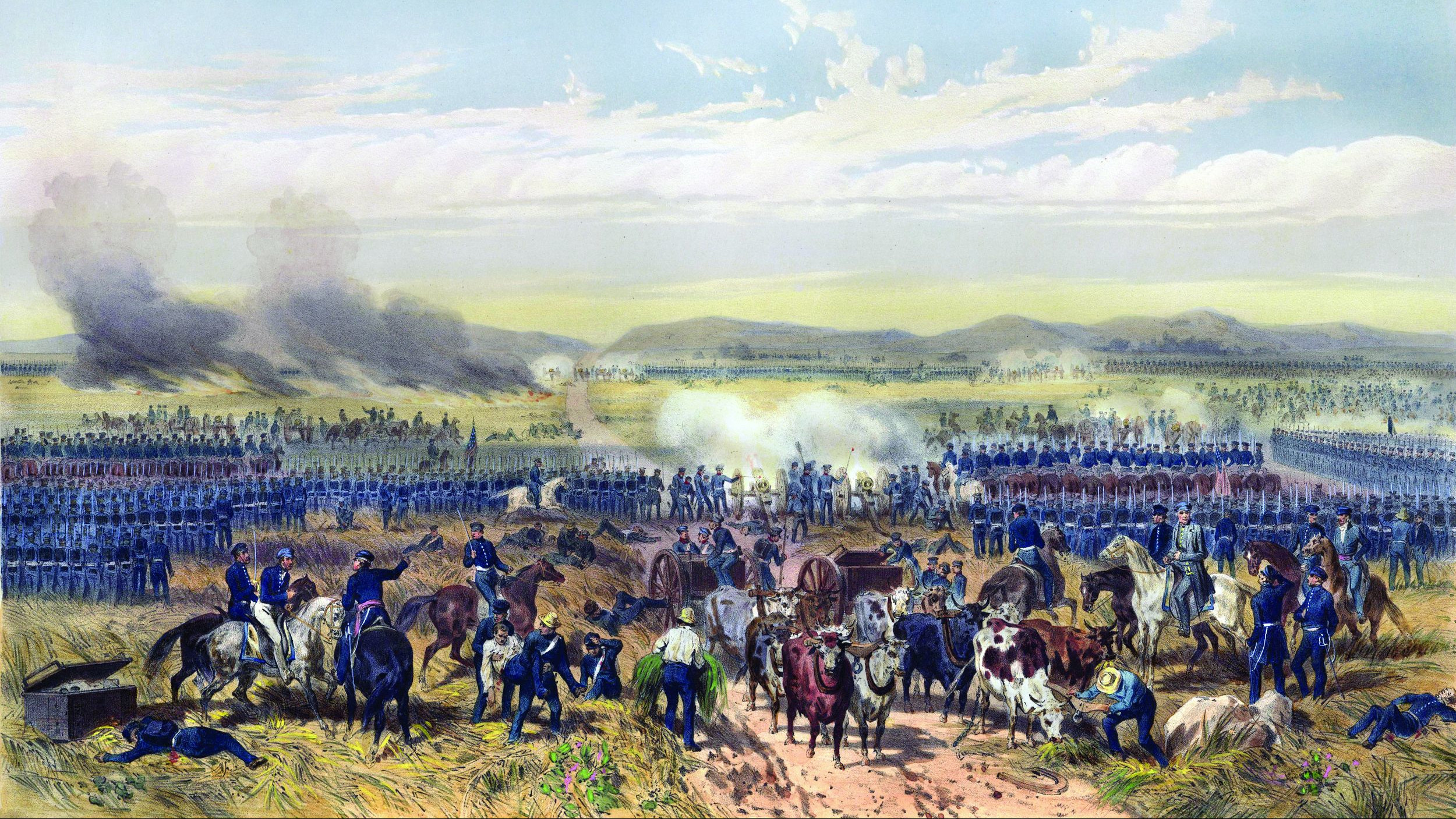

As usual, an excellent article. However, did anyone pay any attention to the Secretary Geneal of the United Nations who hoped, that in the name of humnaity, hostiles will cease in Ukraine? Does anyone recall that no one prayed or hoped, in the name of humnaity, that hostilites would cease, not even that “saintly” Pope Pius XII when Fascists from CATHOLIC Italy and all countries in Central and Eastern Europe joined Nazi Germany, in the CHRISTIAN Crusade to wipe out the godless Russians and the faithless (deicide) Jews from the face of Europe?
You may wish to review what the Chief Rabbi of Rome had to say about Pope Pius XII before making such statements. You may also wish to examine who the leaders of the Central and Eastern European countries were that joined Germany, most under duress and some not practicing Christians but of the same ilk as Hitler. Admiral Horthy of Hungary was a case in point.
Not a Catholic or a Jew here. The criticism of Pope Pius over his so-called anti-Semitic remarks are a slur. They are based on known forgeries by the post-war Soviet KGB to discredit & blacken that Pope’s reputation. He was very vocal in his opposition to Communist regimes and their rabid ant-clerical statements along with their suppression of the Catholic Church in the Eastern block. Designed specifically to fool the uninformed. Just as pervasive and poisonous as the USSR’s use of the Tsarist invention from air of “The Protocols of the Elders of Zion”. Hope you don’t believe that rubbish as well.